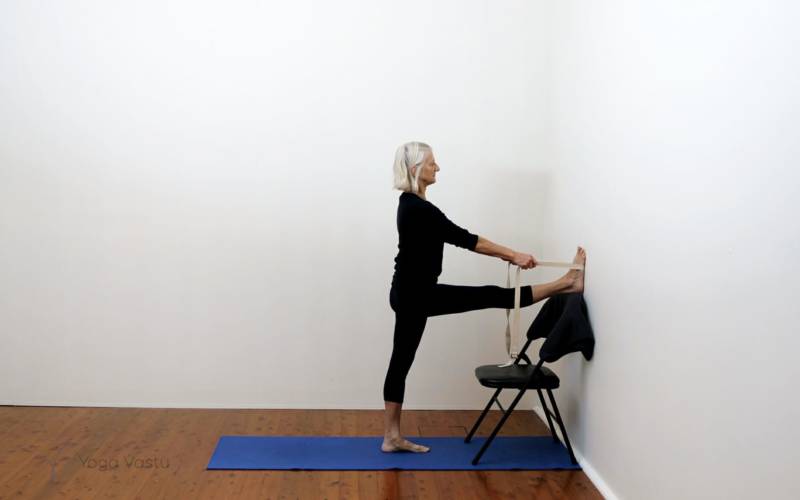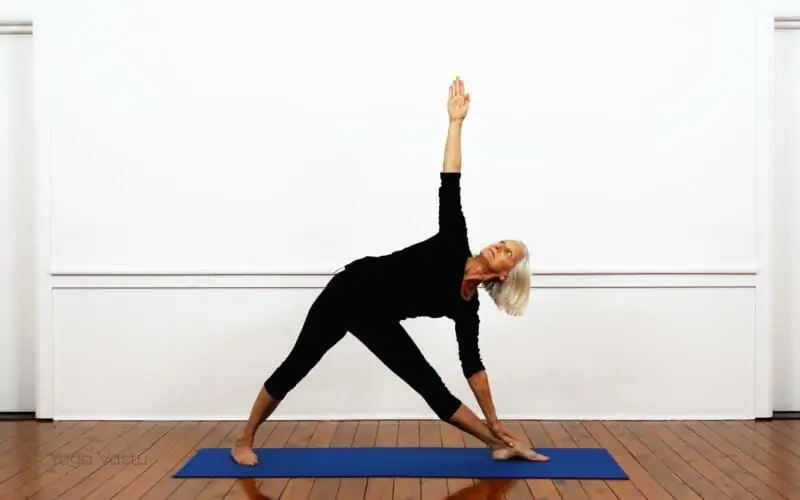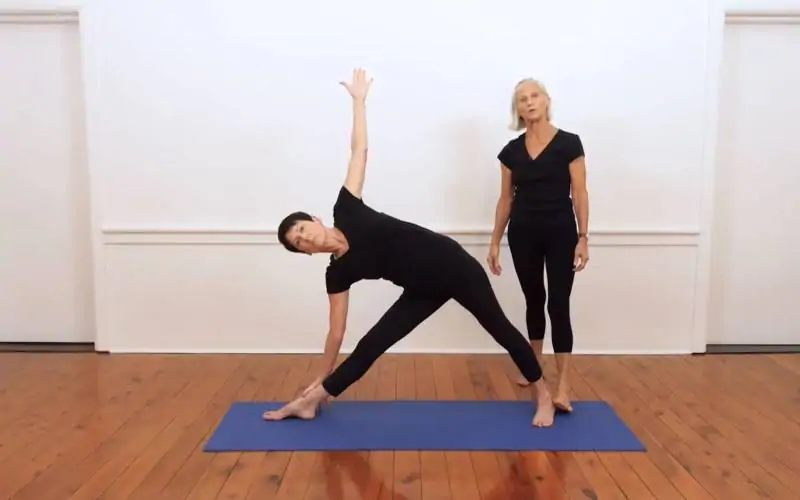How to perform Upward Salute
Keep your shoulders open and stretching away from your ears as you externally rotate your arms and lift them up above your head. Resist the urge to tip backwards, maintain the Tadasana line.
What is Urdhva Hastasana?
Also known as the Upward Salute, Urdhva Hastasana is a shoulder opening exercise that has both energising and restorative properties. It cultivates awareness and a sense of lightness and mild extension in your body.
This is because Urdhva Hastasana is not simply about lifting your arms up in the air. Remember the foundations you’ve built by practicing Tadasana and try to maintain the same length as you lift your arms up. The arms rotate externally, warming up the muscles in your shoulders. The shoulders are not just passively lifting up but instead resisting the lift, pulling down and away from the ears, and opening up to the side. Your ribs will typically want to tip forward; resist that, pull them back, and feel your whole body extending upward through your chest, your arms, and the crown of your head.
When to use Urdhva Hastasana?
Lifting your hands up in the air this way helps warm up your shoulders: not only do they rotate to bring your arms upward, but, by virtue of gravity, they also receive the excess energy that has built up in your arms during the practice. That is why inhaling your arms up after doing an inversion or forward-bend can feel so good.
Another benefit of having your arms in Urdhva Hastasana is the space you add to your chest, allowing for more air to enter the lungs. Overall, extending the arms over the shoulders is the most natural and accessible way to stretch the body.






















